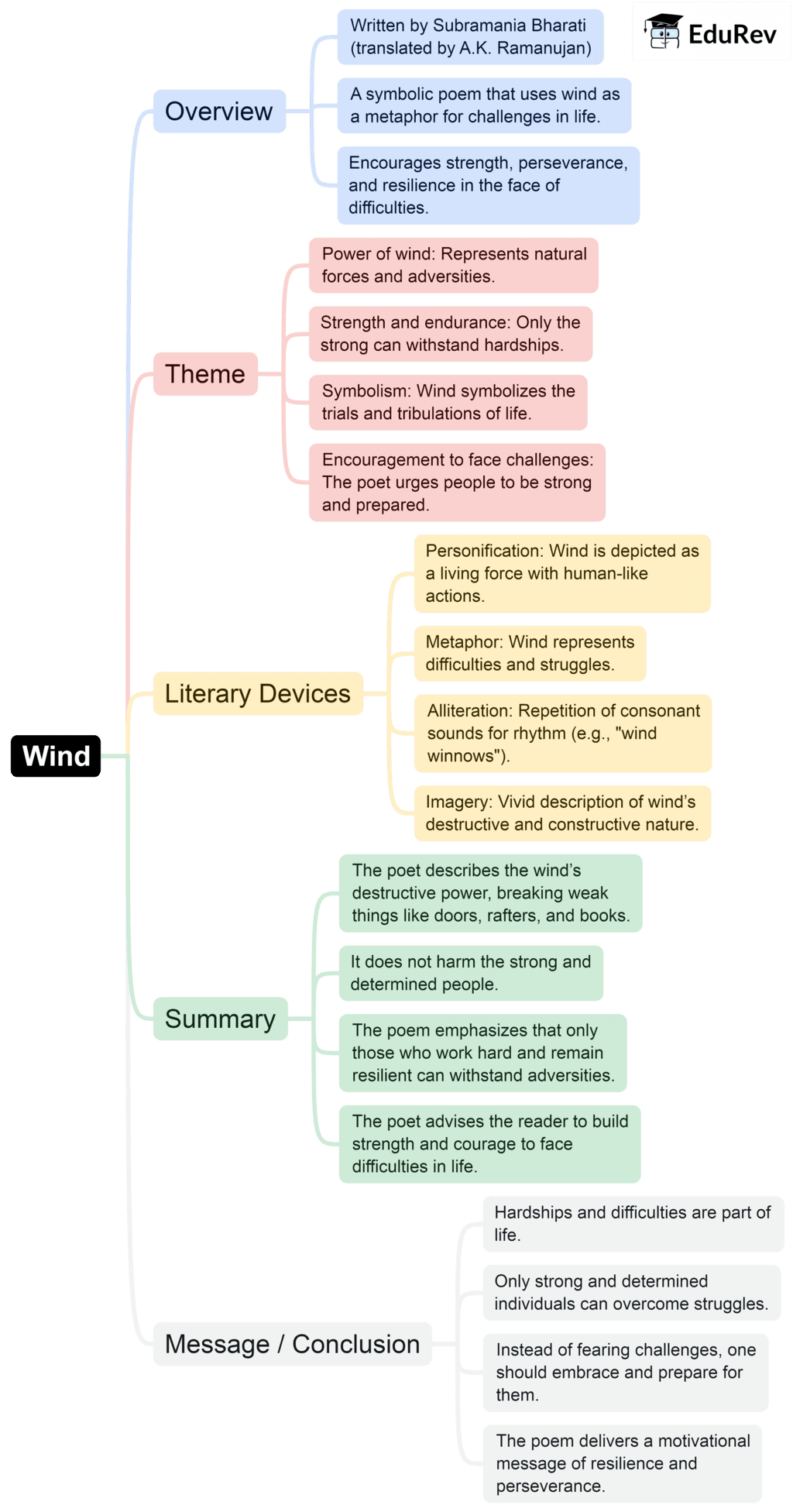Class 9 Exam > Class 9 Notes > English Class 9 > Mind Map: Wind
Mind Map: Wind | English Class 9 PDF Download

The document Mind Map: Wind | English Class 9 is a part of the Class 9 Course English Class 9.
All you need of Class 9 at this link: Class 9
|
180 videos|980 docs|124 tests
|
FAQs on Mind Map: Wind - English Class 9
| 1. What are the different types of winds and how do they affect the climate? |  |
Ans. Winds can be classified into various types based on their origin and behavior, including trade winds, westerlies, and polar easterlies. Trade winds blow from the east towards the equator and are consistent, influencing tropical weather patterns. Westerlies originate from the west and affect temperate regions, while polar easterlies are cold winds that originate from the polar regions. These winds play a crucial role in climate by redistributing heat and moisture around the globe, thus impacting weather systems.
| 2. How do local winds differ from global winds? |  |
Ans. Local winds are winds that occur over a small area and can change direction and intensity within a short time frame. Examples include sea breezes and land breezes, which arise due to temperature differences between land and water. In contrast, global winds are large-scale wind patterns that occur across vast distances and remain relatively constant, such as trade winds and westerlies. Local winds can influence weather in specific regions, while global winds have a broader impact on the Earth's overall climate.
| 3. What is the role of the Coriolis effect in wind patterns? |  |
Ans. The Coriolis effect is the deflection of moving objects, including winds, due to the Earth's rotation. In the Northern Hemisphere, winds are deflected to the right, while in the Southern Hemisphere, they are deflected to the left. This effect is crucial for the formation of cyclones and anticyclones, influencing weather patterns and ocean currents. Understanding the Coriolis effect is essential for predicting weather and studying atmospheric phenomena.
| 4. How do winds contribute to the water cycle? |  |
Ans. Winds play a vital role in the water cycle by facilitating the movement of moisture from one location to another. They carry water vapor from oceans and bodies of water, which eventually condenses into clouds. When the clouds become heavy, precipitation occurs, returning water to the Earth's surface. This process is essential for maintaining ecosystems and supporting life, as it helps distribute freshwater across various regions.
| 5. What are the effects of wind on human activities and the environment? |  |
Ans. Winds can significantly impact human activities and the environment. For example, strong winds can affect agriculture by causing soil erosion and damaging crops. In urban areas, wind patterns can influence air quality and pollution dispersion. Moreover, winds are harnessed for renewable energy through wind turbines, contributing to sustainable energy solutions. Understanding wind behavior is crucial for planning and mitigating its effects on infrastructure, health, and the environment.
Related Searches
















